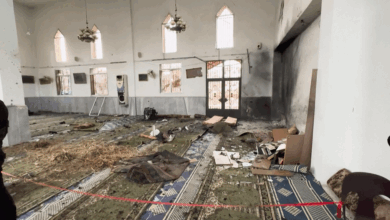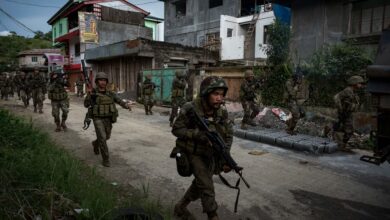
WASHINGTON (Reuters) – The Pentagon has approved drawdown plans in Afghanistan that will still keep two larger bases in the country as officials carry out President Donald Trump’s orders to slash troop levels to 2,500 by January 15, the top US general said on Wednesday.
Trump’s post-election decision last month to cut nearly half of the roughly 4,500 troops currently in Afghanistan came before military leaders could devise plans to execute a drawdown, leaving many questions unanswered about the future US military mission after Trump leaves office on January 20.
Army General Mark Milley, chairman of the Joint Chiefs of Staff, offered the first details about the drawdown at an event hosted by the Brookings Institution think tank. He said that in addition to the two larger bases, the United States would also keep “several satellite bases.”
He said the US military will also continue its two core missions: aiding Afghan security forces who are locked in a grinding conflict with Taliban insurgents and carrying out counterterrorism operations against Islamic State and al Qaeda militants.
However, Milley did not disclose which bases in Afghanistan would be shuttered or say what capabilities would be lost as the United States removes 2,000 troops from the country. He declined to speculate about what President-elect Joe Biden may decide.
“What comes after that, that will be up to a new administration,” Milley said.
As the United States prepares to withdraw more troops, the US-backed Afghan government and Taliban representatives reached a preliminary deal on Wednesday to press on with peace talks.
It was their first written agreement in 19 years of war that Milley said has long been stalemated, with neither side able to defeat the other on the battlefield.
Looking back, Milley said the United States had “achieved a modicum of success” in Afghanistan. He stressed the importance of peace talks, even as he acknowledged that the idea of sitting down with Taliban representatives was “odious” to some people.
“But that is in fact the most common way that insurgencies end, is through a power-sharing negotiated settlement,” he said.
The Taliban were ousted from power in 2001 by US-led forces for refusing to hand over al Qaeda founder Osama bin Laden, the architect of the September 11 attacks on the United States. A US-backed government has held power in Afghanistan since then, although the Taliban have control over wide areas of the country.
Reporting by Phil Stewart; editing by Jonathan Oatis
By Phil Stewart
FILE PHOTO: US Chairman of the Joint Chiefs of Staff General Mark Milley gives remarks during the 19th annual September 11 observance ceremony at the Pentagon in Arlington, Virginia, US, September 11, 2020. REUTERS/Erin Scott/File Photo




